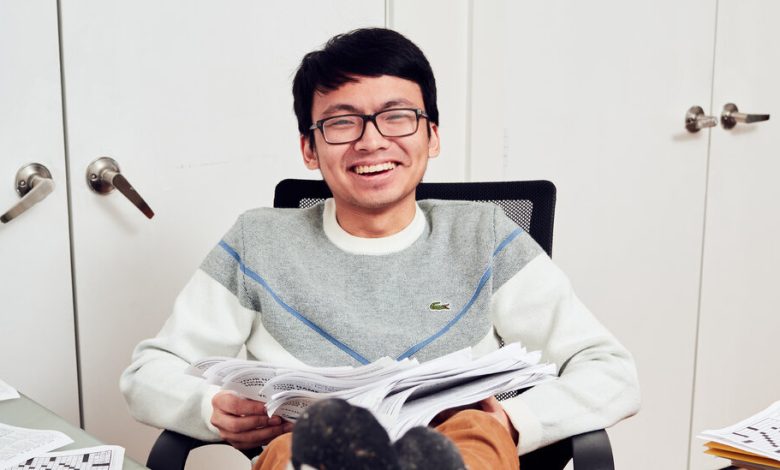How Gen Z Made the Crossword Their Own

30-Across: “___ and dry food (categories I will now be using to describe human food. Oh, so suddenly it’s weird?)”
31-Across: “TikTok videos of ‘Family Guy’ clips accompanied by Subway Surfers gameplay, e.g.”
26-Down: “Lili ___, one of the first trans women to receive gender-affirming surgery”
Who’s this “I” cracking jokes about WET food in the middle of a crossword clue? What is SLUDGE CONTENT doing inside a puzzle? How did we get to learn about Lili Elbe when the answer ELBE almost always refers to the German river?
Welcome to the crossword in the age of Gen Z. Clues require internet meme literacy. Solutions may reflect the identity of the person behind the puzzle. And the way they’re constructed can involve vibrant online forums in addition to scraps of paper.
Grids these days are often “diaristic,” said Paolo Pasco, 23, the winner of this year’s American Crossword Puzzle Tournament, the Super Bowl of crosswords. They can reveal clusters of personal obsessions or glimpses of an idiosyncratic sense of humor. “That’s a big part of what got me into puzzles,” Mr. Pasco said. “This is an insight into the person’s brain who thought of that joke.”
It’s a noticeable shift from decades past, when crosswords were usually faceless, less a site for auteurism than a form of anonymous entertainment. But thanks to a variety of factors — rapidly improving technology to create puzzles, a much wider array of outlets eager to publish them and a push to celebrate new voices — constructors today are more inclined to express themselves in their work.




